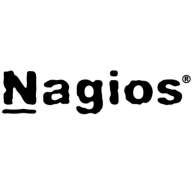

BMC TrueSight Operations Management and Nagios XI are leading solutions in the IT monitoring category. BMC TrueSight appears to have an edge in integration and event management, while Nagios XI shines with its flexibility and customization capabilities.
Features: BMC TrueSight offers integrated platform features, event management capabilities, and root cause analysis. It also allows seamless integration with other BMC products. Nagios XI is known for its extensibility through plugins, strong monitoring capabilities, and being an open-source solution that allows significant customization.
Room for Improvement: BMC TrueSight could improve in ease of deployment, user interface, cloud monitoring, and reporting. Nagios XI needs better integration capabilities, an improved user interface, and enhanced documentation for plugins. It could also benefit from more out-of-the-box features and better incident management.
Ease of Deployment and Customer Service: Both BMC TrueSight and Nagios XI are primarily on-premises solutions. BMC TrueSight can be complex to deploy and requires technical knowledge, with mixed customer service experiences. Nagios XI provides a straightforward setup, especially for smaller deployments, but customer service relies heavily on community support.
Pricing and ROI: BMC TrueSight is a higher-cost solution, offering robust features and support options but requiring a significant initial investment. Nagios XI, with its open-source roots, is cost-effective and offers both free and enterprise versions, providing substantial flexibility in pricing and potential immediate ROI.


BMC TrueSight Operations Management is a solution that delivers end-to-end performance monitoring and event management. It does so by using machine learning, analytics, and AIOps to identify, analyze, and resolve application and infrastructure problems quickly. BMC TrueSight Operations Management also offers automated remediation and ticketing.
BMC TrueSight Operations Management Features
BMC TrueSight Operations Management has many valuable key features. Some of the most useful ones include:
BMC TrueSight Operations Management Benefits
Some of the benefits of using BMC TrueSight Operations Management include:
Reviews from Real Users
Below are some reviews and helpful feedback written by BMC TrueSight Operations Management users.
Mudassir A., Sr. Technical Consultant at a tech services company, says, "The event management part of TrueSight Operations Management, in my experience, is probably the best in the market. You have endless flexibility. You can build your own rules, you have the MRL language, and you can implement any kind of logic on the alerts. It may be correlation, abstraction, or executing something as a result of the alerts. You have almost the whole range of options available for event management using the available customization."
A General Manager - Sales at a tech services company explains, “There are many features that are most valuable in BMC TrueSight Operations Management. First, its proactive monitoring feature is highly developed. BMC TrueSight Operations Management is an intelligent tool that's able to understand day-to-day operations and consistently gives alerts. The alerts are not automatic for some activities, e.g. some alerts are given monthly, while some are given more frequently. The consolidated dashboard where you can enjoy a single pane of glass to look at the full infrastructure from the servers to the VMs, to the clouds, to the application, to the database, to the network devices, including having a topology, and having a tendency map of the topology of key offerings, is also a valuable feature of this solution.”
An Information Systems Computer System Controller at an insurance company states, “The business event manager tool that consolidates detailed information from a single instance of equipment is the most valuable thing for me. It provides support for the business tools and the IT services which come from several systems.”
Nagios XI provides monitoring of all mission-critical infrastructure components, including applications, services, operating systems, network protocols, systems metrics, and network infrastructure. Third-party add-ons provide tools for monitoring virtually all in-house and external applications, services, and systems.
Nagios XI uses a powerful Core 4 monitoring engine that provides users with the highest levels of server monitoring performance. This high degree of performance enables nearly limitless scalability and monitoring powers.
With Nagios XI, stakeholders can check up on their infrastructure status using the role-based web interface. Sophisticated dashboards enable access to monitoring information and third-party data. Administrators can easily set up permissions so users can only access the infrastructure they are authorized to view.
Nagios XI Benefits and Features
Some of the benefits and top features of using Nagios XI include:
Reviews from Real Users
Nagios XI stands out among its competitors for a number of reasons. Several major ones are its integration options and monitoring abilities, as well as its alerting features.
David P., a senior DevOps engineer at EML Payments Ltd, writes, “We use Nagios as a network discovery tool. We use Nagios to maintain our uptime statistics and to monitor our services. It has allowed us to be much more sophisticated in our monitoring and alerting.”
An IT-OSS manager at a comms service provider notes, “Nagios XI has a custom API feature, and we can expose custom APIs for our integration. This is a great feature.”
We monitor all IT Infrastructure Monitoring reviews to prevent fraudulent reviews and keep review quality high. We do not post reviews by company employees or direct competitors. We validate each review for authenticity via cross-reference with LinkedIn, and personal follow-up with the reviewer when necessary.